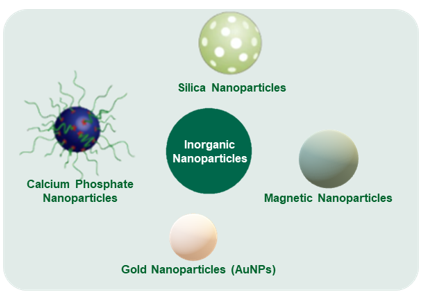Inorganic Nanoparticle Characterization Using the iEM Platform
Current advances in nanotechnology have led to the application of various inorganic nanoparticles, such as calcium phosphate nanoparticles, mesoporous silica nanoparticles (MSNs), gold nanoparticles, and graphene oxide nanoparticles. The main advantages of inorganic nanoparticles are attributed to their hydrophilicity, low toxicity, biocompatibility, resistance to microbial growth, and high stability. At present, with the increasingly refined design of inorganic nanoparticles, their application as drug carriers in precision medicine has been widely studied. Creative Biostructure is committed to providing validation, feasibility, and qualification studies for the analysis of inorganic nanoparticles for different companies in drug delivery and other biological applications. Based on our unique iEM Platform, the needs of our customers will be met, whether it is sophisticated analytical services for the identification of nanoparticles or a broader interpretation of analytical data.
Inorganic Nanoparticles for Drug Delivery

Inorganic nanoparticles are precisely formulated and can be designed in a variety of sizes, structures, and geometries. Most of them have good biocompatibility and stability and fill the performance required by niche applications, while organic materials can not be achieved. In addition, inorganic nanoparticles have unique magnetic, radioactive, or plasmonic properties due to the properties of the base material itself. Therefore, inorganic nanoparticles are increasingly used in various drug delivery, diagnosis, photothermal therapy, and other applications.
- Mesoporous Silica Nanoparticles (MSNPs)
- Calcium Phosphate Nanoparticles
- Gold Nanoparticles (AuNPs)
- Magnetic Nanoparticles
Mesoporous silica materials have pore sizes ranging from 2 to 50 nm. Mesoporous silica nanoparticles (MSNPs) have attracted widespread attention over the last decade because of their distinctive and versatile physiochemical properties, such as chemical functionality, mesoporous structure, and precisely tunable macroscopic form.
Calcium phosphate nanoparticles with diameters of 40-50 nm are also used to deliver therapeutic agents. Compared with other types of nanoparticles as cell transfection vectors, calcium phosphate nanoparticles have good biodegradability and high biocompatibility.
Gold nanoparticles have been used in drug delivery and targeting specific cells or tissues due to their biocompatibility, low toxicity, extensive surface-to-volume ratio, and flexibility of surface modifications. For example, gold nanoparticles of 2.5 nm size as useful transporter can successfully and effectively deliver β-galactosidase into HeLa cells. AuNPs have become highly feasible materials used in cancer treatment.
Magnetic nanoparticles have many amazing physical properties, including superparamagnetism, high specific surface area, and so on. Among them, iron oxides nanoparticles are the most common natural magnetic nanomaterial in vivo. Other engineered magnetic nanoparticles, such as manganese oxide and cobalt ferrite may also be found in biological substrates as drug delivery systems.
Creative Biostructure supports the characterization and analysis of the above inorganic nanoparticles for drug delivery, but not limited to them. We focus on the design and acceptance criteria for each particle characterization scheme and are dedicated to providing suitable and specific analytical procedures using advanced EM technologies. If you have any further questions about our solutions or platform, please feel free to contact us!
- Mitchell, M. J., et al. (2021). "Engineering precision nanoparticles for drug delivery." Nature Reviews Drug Discovery, 20(2), 101-124.
- Jain, A. K., & Thareja, S. (2019). "In vitro and in vivo characterization of pharmaceutical nanocarriers used for drug delivery." Artificial cells, nanomedicine, and biotechnology, 47(1), 524-539.

